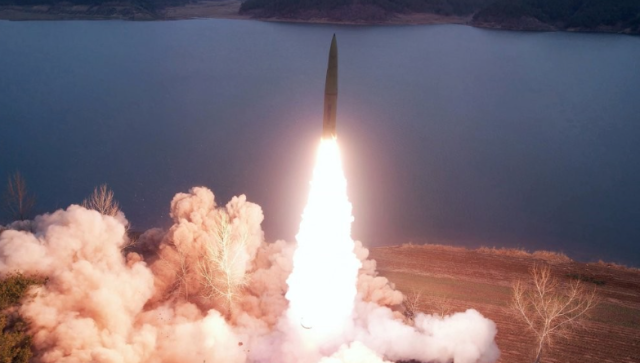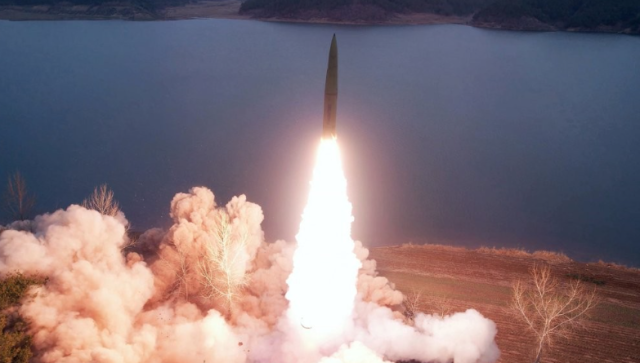
[Yonhap Photo]
North Korea seemed to have upgraded technologies to build an operationally-viable intercontinental ballistic missile but video evidence cast doubt on its ability to field a re-entry vehicle, according to a missile expert from a global think-tank.
With its second flight test of the Hwasong-14 on July 28, North Korea may soon be able to field an ICBM, Michael Elleman, an expert at the International Institute for Strategic Studies, said in an article published by 38 North, the website of a US research institute.
It may be able to reach the US west coast if armed with a warhead weighing 650 kilograms or less, Elleman said in his initial assessment, describing the Hwasong-14 as a prototype designed to maximize "the probability of a successful maiden flight by relying on flight-proven stages".
The North claimed that the test demonstrated its ability to make a surprise ICBM launch "in any place and location any time" and to put the entire US mainland in the range of its missiles.
South Korean Defense Minister Song Young-moo cast doubt over the North's claim it has mastered the technology to produce a nuclear warhead small enough to be mounted on a ballistic missile. "It's too early to say the launch was made to test its atmospheric re-entry capability," he told a parliamentary committee on Monday.
Elleman agreed that a number of critical questions remain about how soon Pyongyang could field a reliable weapon, "not the least of which is whether or not North Korea can shield a nuclear warhead from the rigors of re-entry into the earth's atmosphere at ICBM velocities".
"In short, a reasonable conclusion based on the video evidence is that the Hwasong-14's RV (re-entry vehicle) did not survive during its second test," the expert said in his new assessment, based on footage from Japanese TV station NHK's weather camera that captured the vehicle crashing into the sea.
"If this assessment accurately reflects reality, North Korea's engineers have yet to master re-entry technologies and more work remains before Kim Jong-un has an ICBM capable of striking the American mainland," Elleman said.
The re-entry vehicle continued to slow with its temperature soaring "as it approaches impact with the sea," he said, adding it dimmed and quickly disappeared at an altitude of three to four km. "Had the RV survived the rigors of re-entry, it would have continued to glow until disappearing."
John Schilling, a US expert, said in an earlier 38 North article that the Hwasong-14 was an "unreliable" missile that could reach Alaska or Hawaii with a single nuclear warhead.




